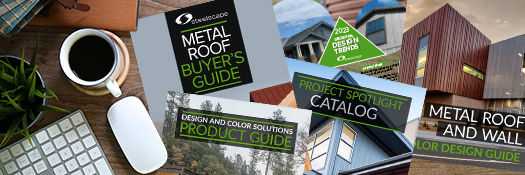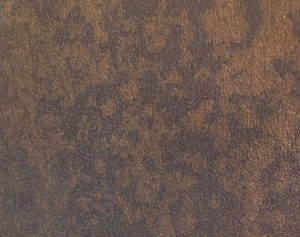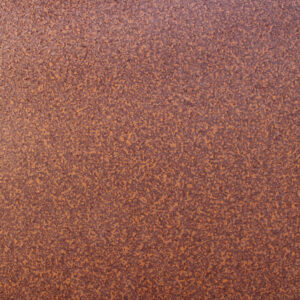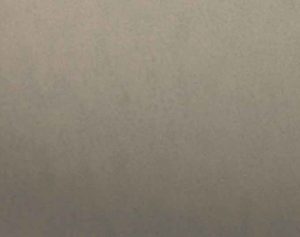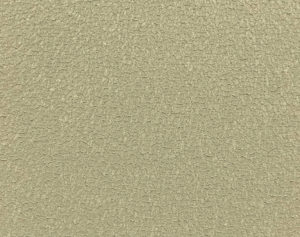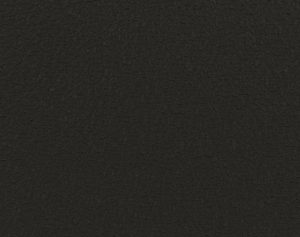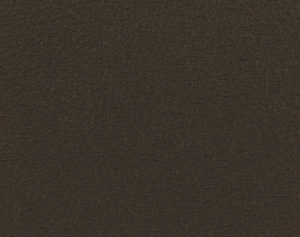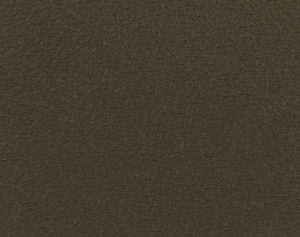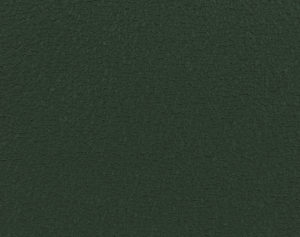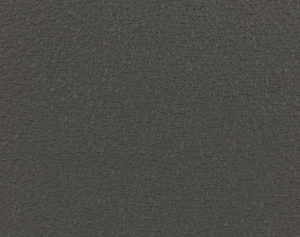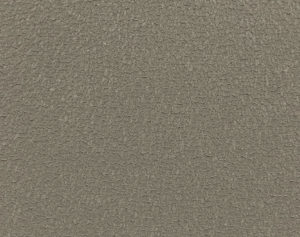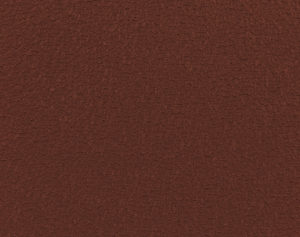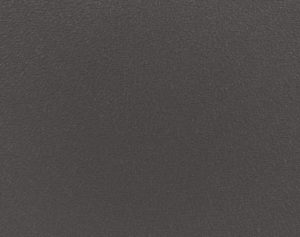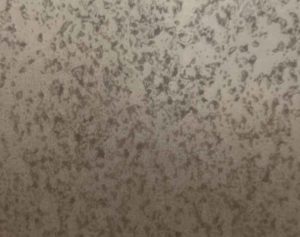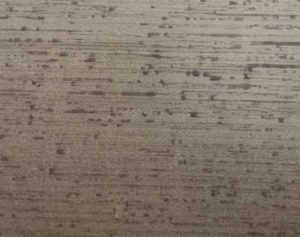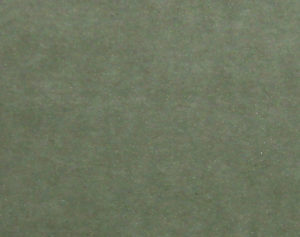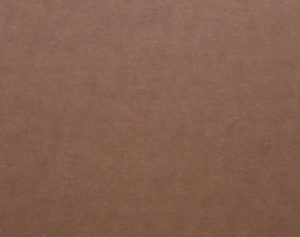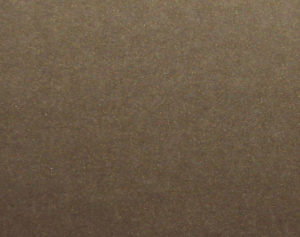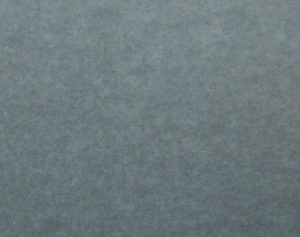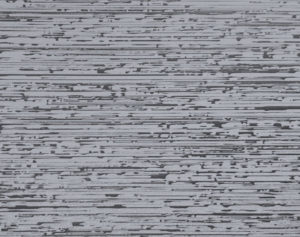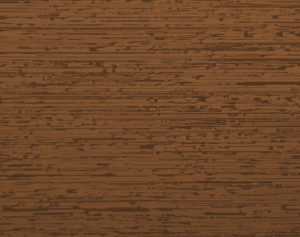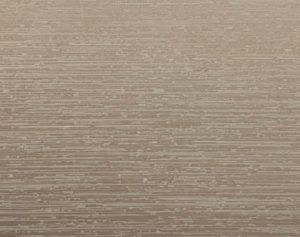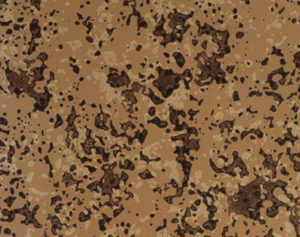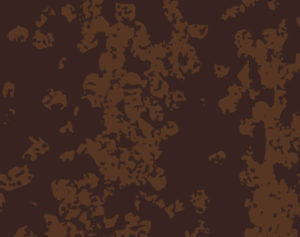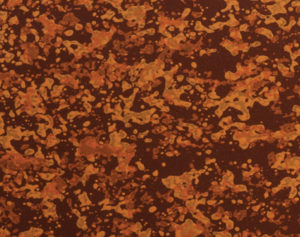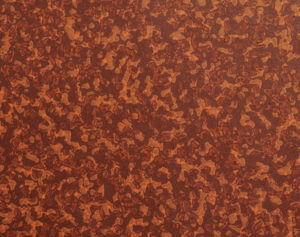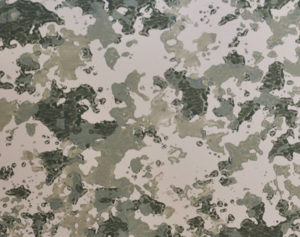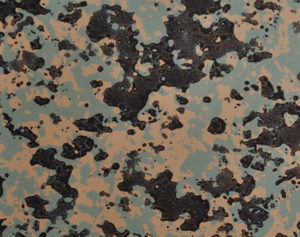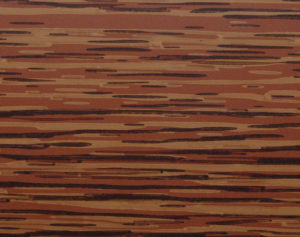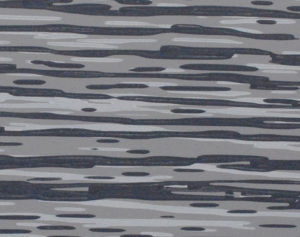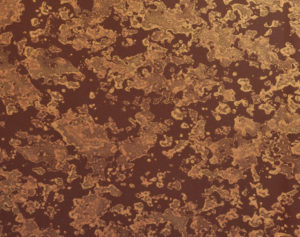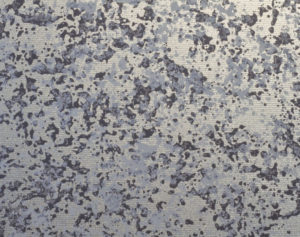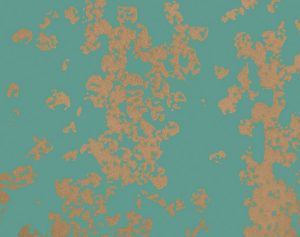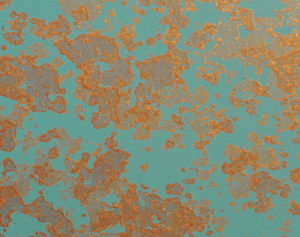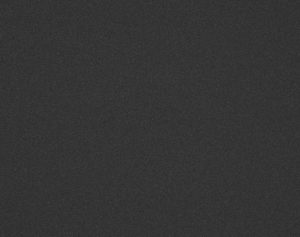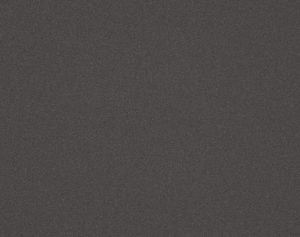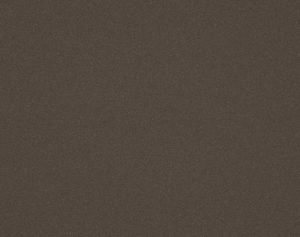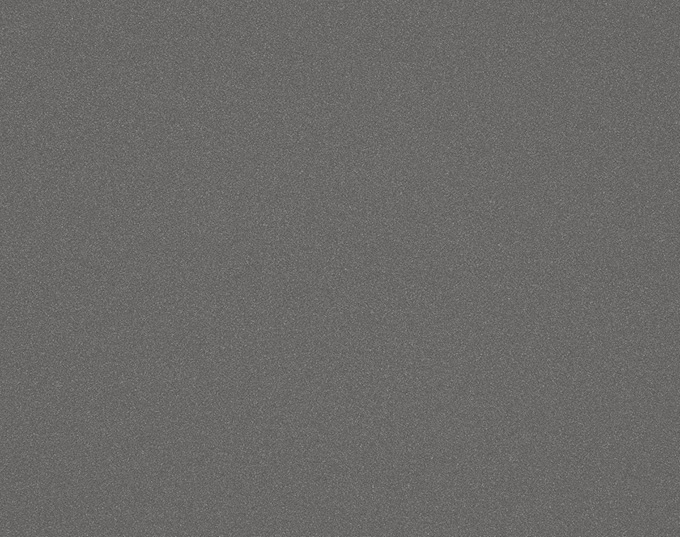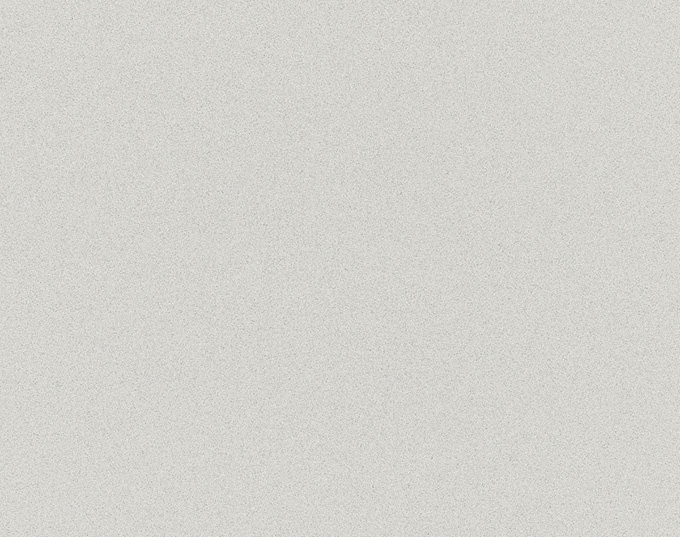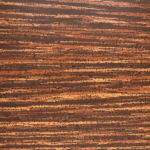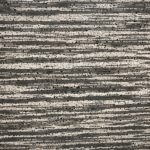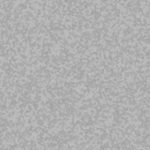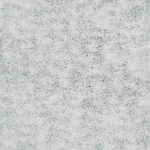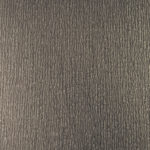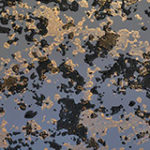Did You know Steelscape also offers two full-hour AIA accredited courses, available in live, or on demand format.
Have a recommendation for new course content?
Or have a question related to metal design?
Metal Roofing & Siding Design Considerations for Marine Environments
Learning Objectives:
- Define the characteristics of a marine environment for the purpose of metal roofing or siding installations
- Review the paint modification and enhancement options available to improve metal’s suitability for marine environments
- Understand the impact of substrate selection on marine environment suitability
- Explore other concerns and considerations when installing pre-painted metal in a marine environment
Course Overview: Watch the embedded video, review the written content, and take the assessment found at the bottom of the page. You must score 100% in the assessment to pass.
Credit: 0.5 LU/HSW
Learning Content:
Pre-painting or coil coating reflects the method of applying paint to metal before end product fabrication. The paint is applied in a continuous, automated process, enabling high consistency and tight quality control. Prior to being painted, the metal is first cleaned (using a chemical mix) before coatings are applied using rollers. After the metal is coated, the paint is baked on to create adhesion.
Painted metal is produced at speeds around 100 feet per minute and up (up to 700 fpm) and the curing process takes only 15-30 seconds. This is the most common process for painting metal used in roofing and siding construction products. It is commonly used for metal products as it is flexible, robust, efficient, and supports the continuous end-product forming process (roll forming).
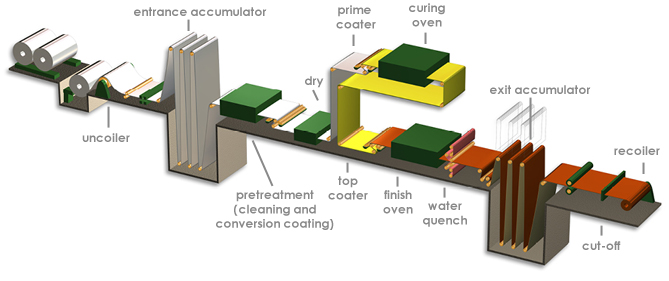
Coil coating process overview
A coating system for pre-painted metal is composed of multiple layers. Depending on the paint system or finish required, some layers such as the clear coat or primer may not be necessary. The metal is coated on both sides for protection and aesthetic appeal.
The coatings applied to the metal include: (in order of application)
- Metallic coatings – Provide corrosion resistance.
- Pretreatments – Clean the metal and improve paint adhesion attributes.
- Primers – Prepare the substrate for painting by providing “bite” for adhesion and directly support topcoat color and flexibility. Primers also provide corrosion resistance.
- Topcoats – Offer protection from the outside elements, in addition to color and aesthetic appeal.
- Backers – Provide the underside base color, some protection, and a substrate (basis) for adhesives. Some custom applications may have a double-sided topcoat rather than a backer.
- Clear coats – Optional layer to add perceived depth to a surface, enhance gloss, and provide a final protective layer.
Pre-painted metal systems can be modified for specific environmental applications. This Includes enhanced durability for coastal or industrial environments. Product options include high-build primers or applying clear coats. These modified systems typically include a three or four coat system with a high build primer and may enable the creation of a warrantable finish despite environmental extremes.
A marine environment is usually defined by a specific distance from salt water. This varies by paint supplier and can range from 1000 feet to 1 mile. The base metal (also called substrate), the specific location, and the manufacturer of the paint will dictate paint system requirements and warranty duration.
Breaking surf and rainfall are important considerations impacting the severity of the marine environment. Breaking surf creates spray and salt laden air, and rainfall acts as a rinsing agent that washes salt off metal surfaces. Due to this, the Puget Sound region, with little breaking surf and annual rainfall of 42 inches is a less severe marine environment compared to the Southern California coast, with its strong breaking surf and less than 12 inches of rain per year.
Paint enhancement options for marine environments usually consists of a high build primer, often four times standard thickness. Some products may also require a clear coat of .50 – .80mil thickness or additional thickness of the backer coat to offer a warranty. Aluminum often requires less additional paint than Galvalume or Galvanized because of its superior corrosion resistance.
As a cautionary note, the addition of a clear coat can alter the visual appearance of the color slightly. This is more apparent on lighter colors and mica/metallics. The comparison below highlights this shift, notably in the white with a clear coat. The panels pictured left to right are standard paint, thick film primer, and paint with a clear coat.
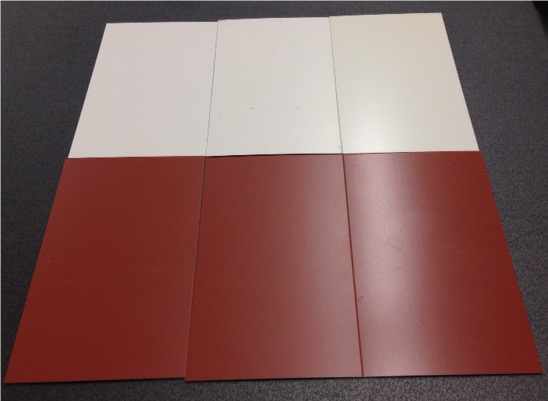
The panels pictured represent standard, thick film primer, and paint with a clear coat from left to right in both white and red configurations.
Substrate, or base metal, is an important consideration for marine environments. Aluminum offers superior corrosion protection compared to steel. However, aluminum as a material presents performance trade-offs. It is more expensive compared to steel and is more malleable than steel. As a result, it may not provide the same engineered performance, such as wind uplift values, and may require thicker material to achieve performance targets.
55% Aluminum-Zinc coated steel, known by the trade name Galvalume® or ZINCALUME® is the next best substrate option as it has superior performance in marine locations compared to galvanized. As a protective element, zinc provides a sacrificial barrier for the steel underneath. This ensures the coating will corrode preferentially to the base steel. However, as it is sacrificial in nature, it is consumed gradually over time. Aluminum by comparison, provides a protective barrier which prevents the spread of corrosion. Aluminum-zinc coatings combine the benefit of preferential corrosion, while slowing its spread, to provide longer-lasting corrosion protection.
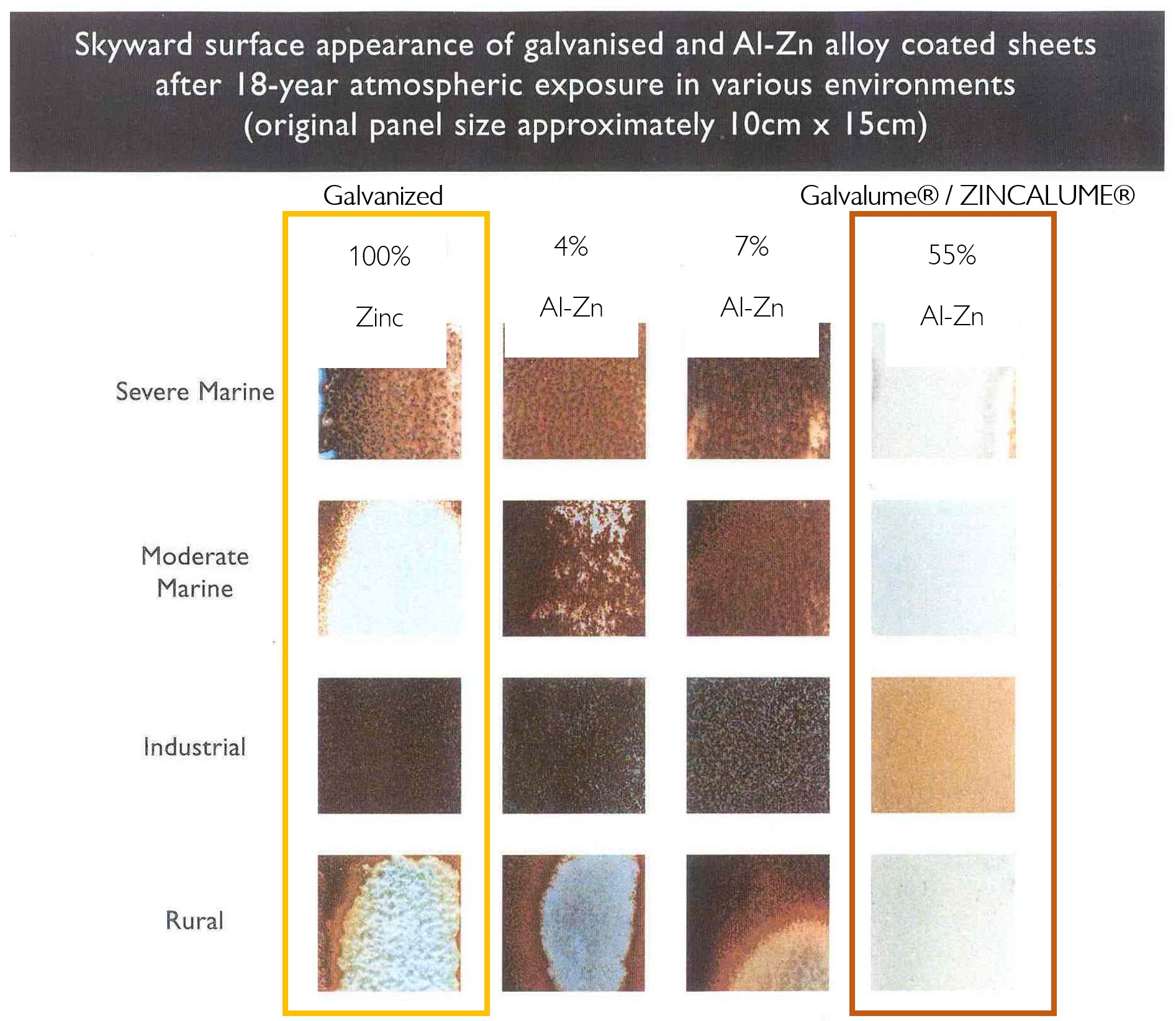
A comparison of galvanized and aluminum-zinc (Galvalume/ZINCALUME) coatings in corrosive environments.
Key installation and design considerations for marine environments include:
- Selecting concealed fastener panel designs to minimize exposed openings and penetrations.
- Avoid the mixing of dissimilar metals which can create galvanic corrosion (a significant concern impacting fastener and accessory selection in marine environments).
- Ensuring roof planes are of the appropriate slope with adequate water runoff – no less than ¼:12 pitch.
- Follow manufacturer recommended product maintenance. This includes freshwater washing, especially for any sheltered areas such as under overhangs or eaves.
The use of dissimilar metals in a corrosive environment can lead to a rapid form of corrosion known as galvanic corrosion. Galvanic corrosion is an electrochemical effect where one metal corrodes in a different manner when in contact with another metal. Typically, moist air or chemical environments provide the conditions for this type of corrosion. The degree of dissimilarity is affected by the metal type and the surrounding environment. In an inert environment, there may be no galvanic corrosion, but in proximity to salt air, the galvanic corrosion can be severe.
Galvanic corrosion needs three criteria to occur:
- Two+ dissimilar metals,
- Metal to metal contact, and
- Both metals reside in the same conducting solution, i.e. salt air or water.
Below is a list of the dissimilarity of metals in a simplified galvanic table. The further away the two metals are on the list, the greater the potential for galvanic corrosion to occur; the “more active” metal will sacrifice itself in favor of the “more noble” metal. This applies to not only fastener selection, but trim, gutters, clips and other accessories.
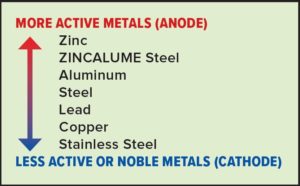
A simplified galvanic table
It is always important to understand the details of product warranties. Warranties are not all the same and headline figures such as ‘Lifetime’ or ‘30 years’ may mean different things. Warranties will typically differ in length based on the environment of the installation.
Notice how in the sample warranty below, marine environments have a significant impact on warrantability and mandate modifications to the paint system.
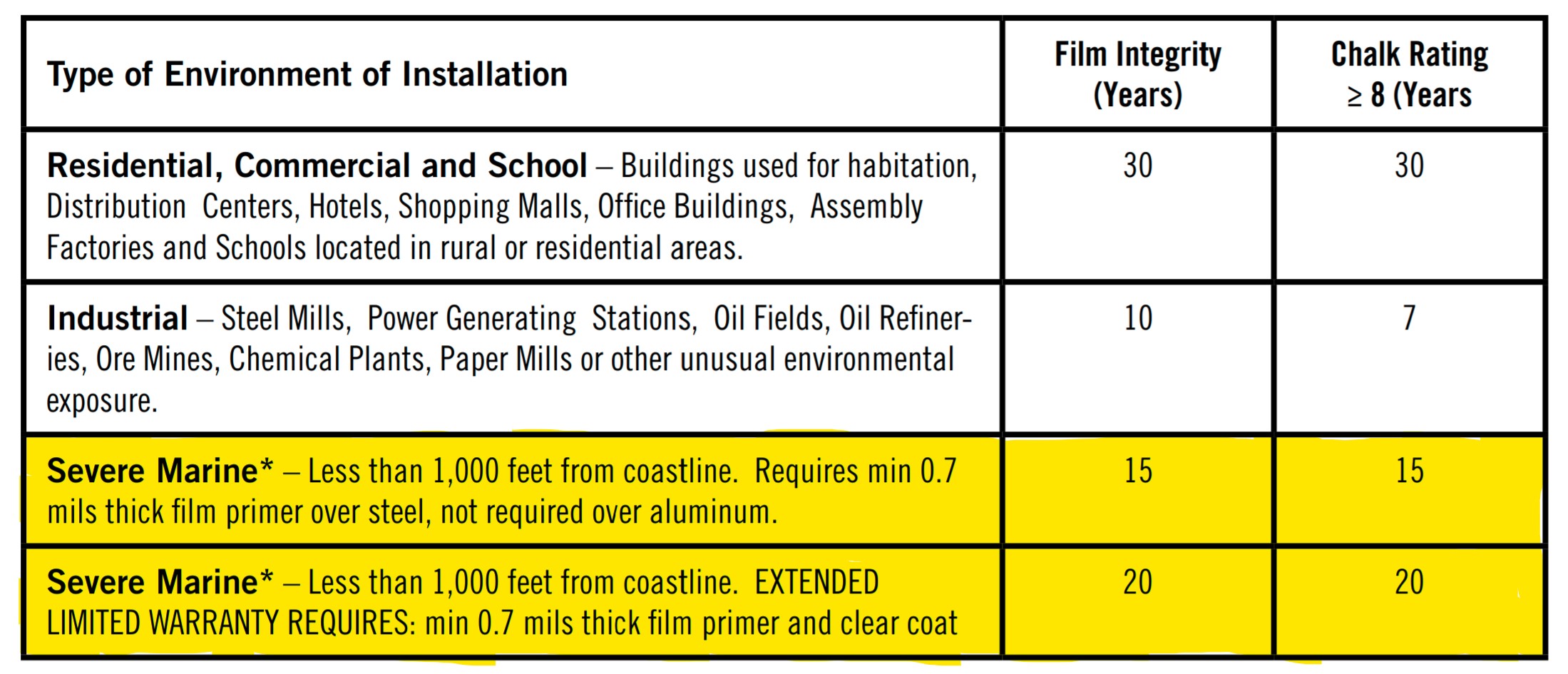
Excerpt from a sample PVDF warranty, highlighting specific conditions for marine environments
The following points reflect important considerations for metal roofing and siding installation in marine environments:
- Know the specifics of the project’s environment.
- Talk to your preferred metal product supplier about ordering and product considerations – There may be product type and availability differences based on different substrates.
- Understand the impact on project schedule and cost if a custom marine paint system is required.
- Review the product and finish warranties being offered.
- Review all accessory and other products in direct contact with metal (to avoid dissimilar metals).
- Discuss with the installer – are they experienced with marine installations?

